
Brought to you by
Norwich Pagan Sphere
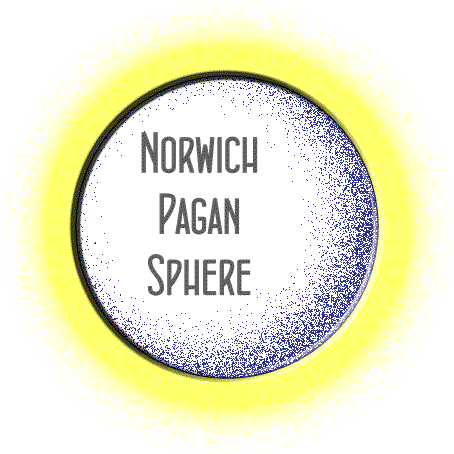
 |
Brought to you by
|
The wolf is viewed with mixed feelings, from fear and hatred, to spiritual veneration. The objects presented here tell stories of that conflicted perception, with the wolf, as symbol of evil, yet proving itself kinder than humans, and indeed representing royal and religious power. (The appendix goes into the real and perceived nature of wolves in more detail.)
These saucers, made by Wm. Adams & Sons between 1950 and 1962, show an iconic scene from East Anglian history and legend. A wolf (if rather fox-like) sits guarding a crowned head. It is the head of King (subsequently Saint) Edmund.
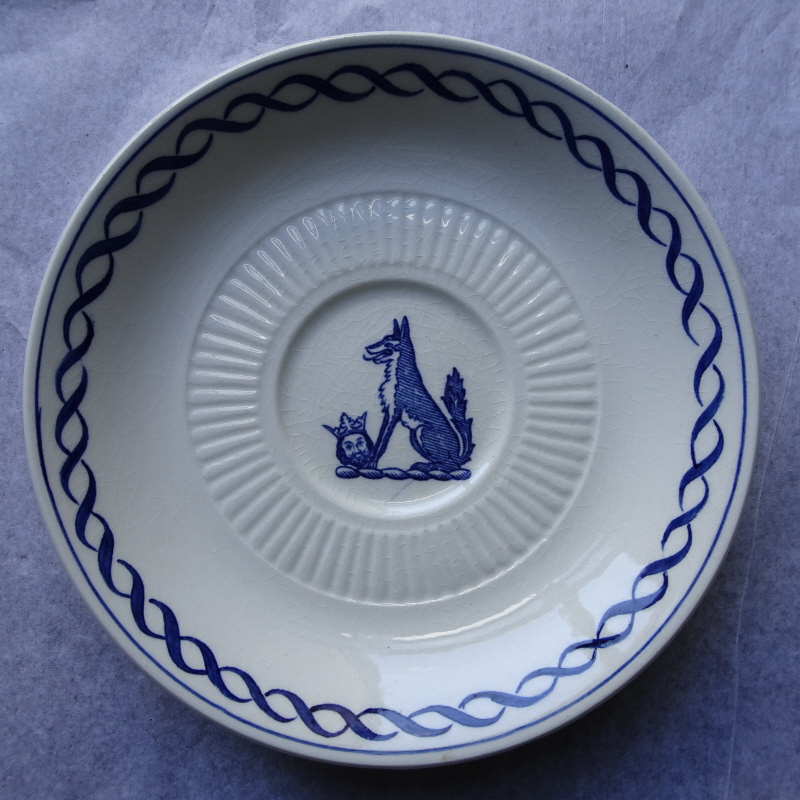
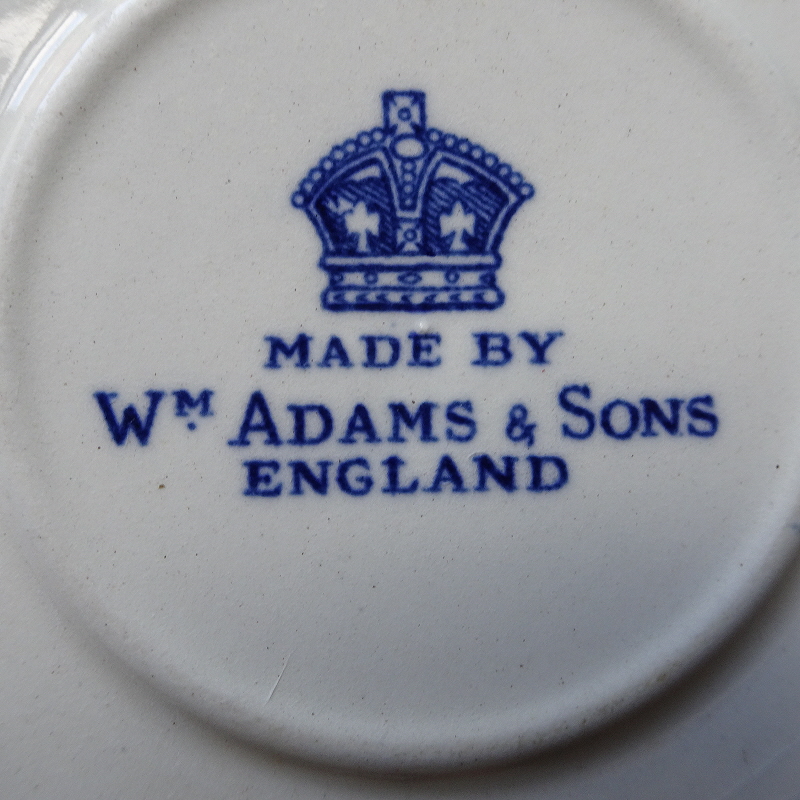
Edmund, King of East Anglia, was defeated by the Danish invaders and tortured to death in 869 CE, allegedly by being shot full of arrows, as his captors tried to get him to submit to their rule. He was then beheaded and his head hidden to stop him being given a proper burial. However, searchers found it being guarded by a wolf, having been drawn to the spot by someone calling "Here!" ‐ as it turned out, it was the head itself calling. Edmund's head had its speech restored under the guardianship of the wolf (restrained by God), despite the attempt by the wolfish Danes to silence him by beheading. (Wolves stealing speech was a common idea at least as far back as ancient Rome; see Marshall, 2022.)

The cult of Saint Edmund became pre-eminent in East Anglia and was even promoted by the new Danish rulers for political ends. He also became a special protector against pestilence, because of the story of him being shot with so many arrows.
The invasion by the Danes, portrayed as as bad wolves, may well have lain behind the production of Beowulf in East Anglia, in response to the threat, juxtaposing the evil lupine monstrosity of Grendel and his mother with the controlled, even holy lupine energy of the titular hero (Marshall, 2022; Newton, 1993). A wolf also leads the outlaw Hereward's band to safety in the Fens (Swanton, 1998)
However, the wolf was around before the miraculous finding of the King’s head. Rebecca Pinner (2015, pp. 220-5) notes that the ‘wolf and head’ motif was around before 869 and draws attention to the famous solar figure between beasts motif on the Sutton Hoo purse. Indeed, Edmund was the last of the line of the Wuffing kings of East Anglia, the ‘Little Wolves’, who had their burial ground at Sutton Hoo in Suffolk, and who traced their descent from Woden (who has companion wolves), via Caesar (Newton, 1993, pp. 105-9).
This seemingly rather unlikely inclusion of a Roman Emperor emphasises the high regard in which the ‘glory of Rome’ was held by Anglo-Saxon royalty. It is also shown in the borrowing, by East Anglian King Aethelberht (d. 794), of a prominent motif, found on early Anglo-Saxon sceattas, but ultimately from Roman coinage: the wolf and twins (see North, 1963, p. 68, Plate V no. 14).
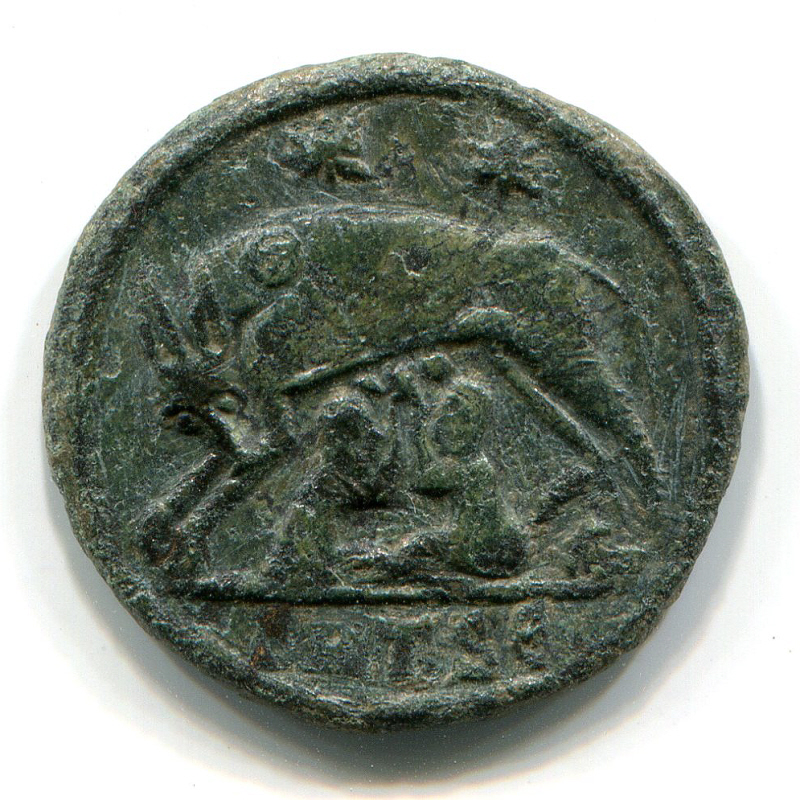
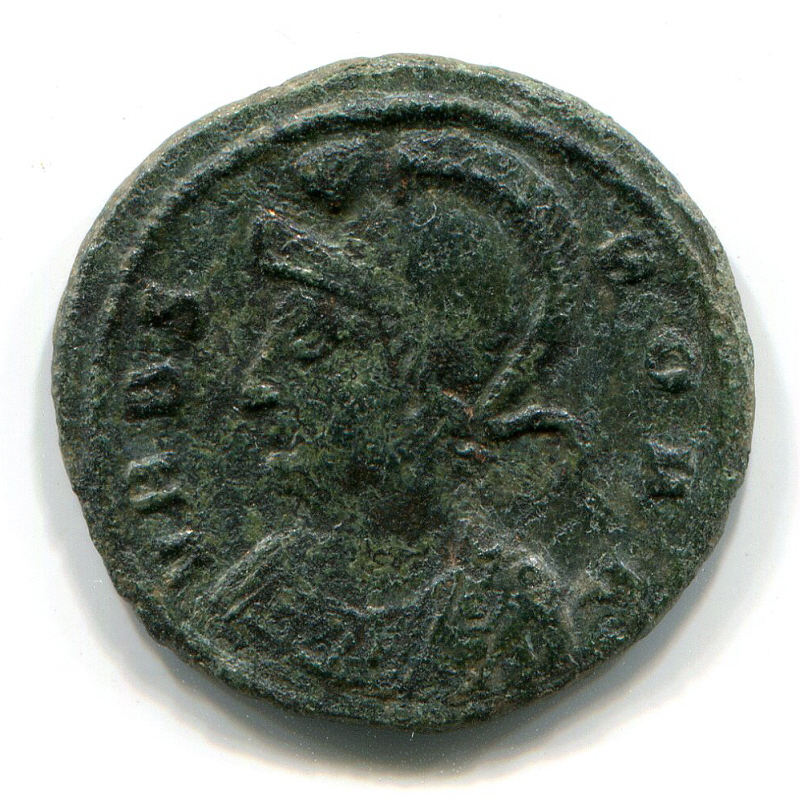
The wolf and twins motif derives from the foundation myth of Rome, a story in which a wolf is about the only likeable character. The setting is a community of people living by the Tiber, descendants of a band of refugees from the destruction of Troy by the Greeks, led by the semi-divine Aeneas (whose mother was Aphrodite), which had fetched up in Latium. A woman called Rhea Silvia was forced into being a Vestal Virgin by her uncle, who had deposed her father, the rightful king of their people. Despite this sacred chastity, she was raped in her sleep by Mars and later gave birth to twins: Romulus and Remus. Her uncle had his servants take the babies to be drowned in the Tiber, but the river was in spate, so they abandoned them on the bank, fearing for their own lives. The twins were swept downstream and thrown up at the foot of what would later be called the Palatine Hill. Here, they were found by a she-wolf who had recently given birth herself, but whose pups had died (how is not explained, but she was apparently sent by Mars). Nothing more is heard of their birth mother, but the twins are suckled by the wolf, until found by a shepherd, who takes them home. The boys grow up and eventually kill their uncle, then set about building their own city. Unfortunately, they can’t agree on where and come to blows, with Romulus ending up killing his brother, Remus. This foundational fratricide, along with the ambivalence of their lupine surrogacy, has been said to have characterised Rome ever since. Furthermore, even in antiquity, the myth was suggested by sceptics to be a cover for the twins being brought up by a prostitute – lupa means both she-wolf and whore in Latin.
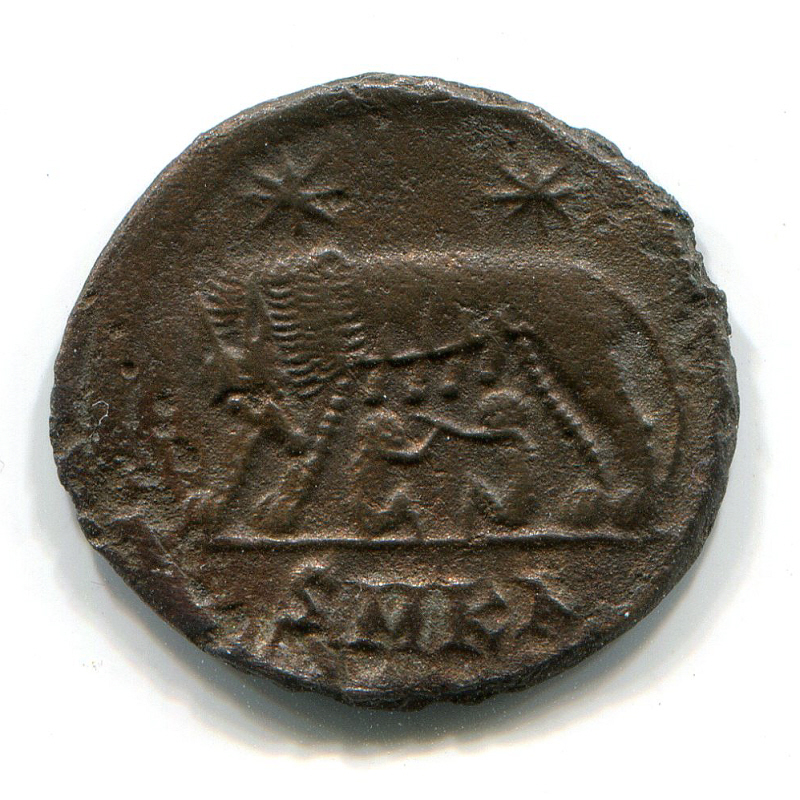

As the image of the she-wolf suckling Romulus and Remus became a symbol of Rome, so it subsequently became a symbol of the Roman Church, with the rapacious wolf feeding rather than eating the human babies making it superficially appropriate to the Christian message. As such, the convert kings of the Anglo-Saxon elite were able to use it as a symbol both of their inheritance of the power of Rome and of their righteousness in the Christian Church. The importance of the motif, if in re-imagined form, is seen in its inclusion on the early-eighth-century, Northumbrian Frank’s Casket, now in the British Museum. In East Anglia, the new symbolism was combined with the traditional royal imagery of the ‘Little Wolves’ to be doubly powerful.
However, the importance of the wolf in East Anglia appears to predate the Anglo-Saxon period. Anna Gannon (2003, pp. 128-30) draws attention to a group of early (pre-750) Anglo-Saxon silver coins (sceattas), produced in Norfolk and known as ‘Series Z, Type 66’, which depict an angular beast, which may have originated as a lion, but here takes on clear characteristics of a wolf, and seems to reference the Iceni ‘Norfolk wolf’ gold staters, produced around 55-15 BCE (see Talbot, 2017, pp. 8, 13-18, 86-8).
Daphne Nash Briggs (2010) discusses the presence of wolves on Celtic coins, pointing to a particular significance of Norfolk and Lincolnshire examples, suggesting that to the ancient British people, there may well have been a cosmic ‘fen-wolf’, akin to the Norse Fenrir. In this she deepens what Miranda Green (1992, pp. 159-60) has to say on the subject of cosmic wolves on Celtic coinage. Ralph Häussler (2016) proposes that the Apollo Cunomaglos of the shrine at Nettleden Shrub, Wiltshire, is a British deity whose name means Lord of Wolves (rather than ‘dogs’), suggesting a native reverence for the wolf, and Adrian Marsden (2014) suggests Apollo may have been honoured in NE Norfolk in Romano-British times from the localised finds of raven representations. (On the other hand, these could relate to Odin/Woden.)
There is another allusion to early wolf totemism in East Anglia, although coming from a sensationalist Roman author. According to the speech put into her mouth by Cassius Dio, Boudica called on her people to show the Romans "that they are hares and foxes trying to rule over dogs and wolves" (Roman History 62.5.6). This statement, which may well say more about Dio’s attitude to Rome than Boudica’s, was probably written some time in the 220s (Barnes, 1984), but may have strengthened later associations with wolves in East Anglia.
All in all, the wolf, with its fascinating ambivalence in human culture (see the appendix), takes on a special significance in East Anglia, most evident in the royal line of the Wuffings, culminating in the iconic motif of Saint Edmund’s head between the paws of a mighty wolf, but perhaps stretching back much further in time.
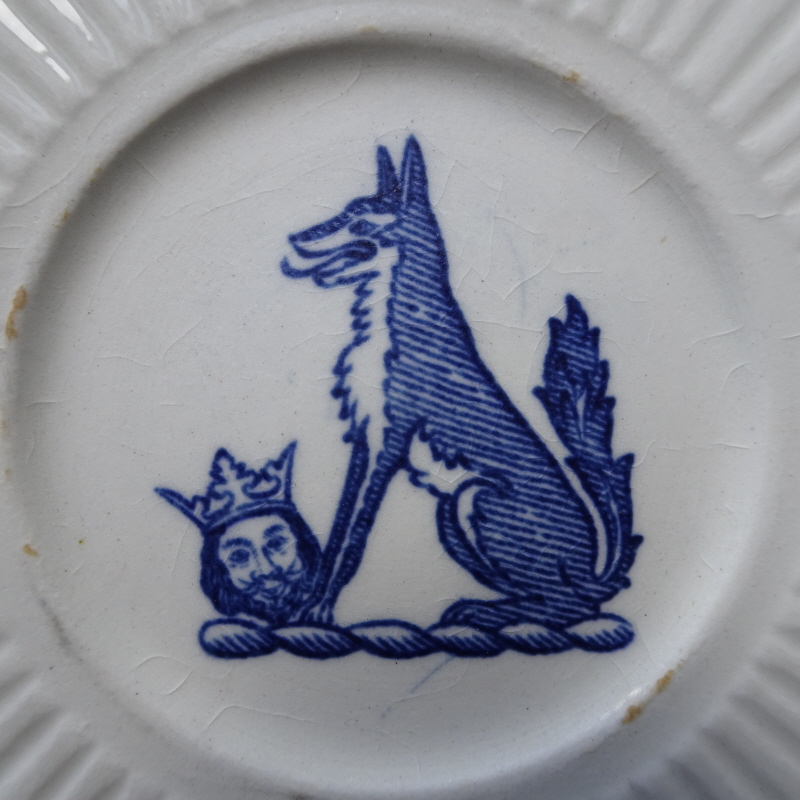
Most wolves are of the species Canis lupus, the Grey Wolf. They once roamed most of the northern hemisphere, but humans have reduced their numbers by means of habitat change, competition for food species and direct hunting. Pogroms against wolves became most intense when wild prey animals gave way to domesticated livestock and, in Britain, when the royal sport of hunting made deer especially precious and the wolf especially villainous. (Note in this context the medieval term ‘wolfshead’, applied to outlaws, who could be killed not only with impunity, but also as a duty.) The last wild wolf in England and Wales was probably killed in the sixteenth century (if not earlier), and in Scotland in the eighteenth (Pluskowski, 2006).
Humans have always had mixed attitudes to the wolf, from deep respect to irrational fear and loathing, with the latter perhaps genetically hard-wired into us from a time when our evolutionarily distant ancestors were more likely to be prey. As we pushed the wolf’s range into the ‘wastes’, so the wolf became associated with the wilderness, and the scariness with which that concept was (and still is) often associated, although even now the wolf is not confined to such areas. On the other hand, we took wolves into our homesteads at least 100,000 years ago and began the process of the creation of a new sub-species, Canis lupus familiaris, the domestic dog, which has continued to exchange genetic material (i.e. inter-breed or hybridise, depending on perspective) with wild wolves ever since (Vilà et al., 1997).
Mythology and folklore have presented multiple images of the wolf. Traditional societies, from North American First Nations to the Saami of Northern Europe, have had a balanced respect for the wolf in general, killing it to keep predation of herds to an acceptable level, but honouring the wolf spirit and seeking its aid in shamanic practice, as well as giving it a key role in creation myths.
In the mythology of Northern Europe, the wolf has multiple layers of meaning, but usually with a dark aspect. The All-Father, Odin, is accompanied by a pair of wolves and a pair of ravens, the two quintessential undertakers of the slain, as he stalks the battlefields and waste places. Warriors take on the mantle of the wolf to become ferocious death-dealers in battle (which is still a living military phenomenon, although today less likely to involve wolf body parts and narcotics). Nobles consider themselves descended from wolves (like the Wuffing dynasty of the old kingdom of East Anglia). The Sky God, Tyr, loses his hand to the über-wolf, Fenrir, as the gods desperately, but deceitfully bind him. And as the Sun and Moon flee from wolves in their diurnal round, so Fenrir returns at Ragnarök to take his revenge and swallow Odin, and end the world as we know it. Similar concepts, of the wolf as a cosmic destroyer, appear to be present in the Celtic west as well (Green, 1992; Nash Briggs, 2010).
In the south of Europe, however, where human-wolf interactions are perhaps less charged, Apollo is associated with the wolf, as wolf-born and as wolf-slayer. A wolf-mother suckling Romulus and Remus becomes a symbol of Roman imperial power and prestige, such that it is taken over by the Christian church. Elsewhere in medieval Christianity, however, the wolf becomes a symbol of the Devil, and the Devilish transformation represented by the werewolf is perceived as a real threat.
Into the modern period, western society has viewed the wolf in an overly negative way, blaming it for exaggerated versions of its own worst traits. In folklore, legend and children’s literature, the wolf is associated with war, death, lust, darkness, moral corruption, rapaciousness, ravenous hunger, savagery and (despite the existence of packs) selfishness, as well as gullibility. The presence of the wolf as the evil character in children’s stories, like Little Red Riding Hood, is of concern, as it still inculcates a fear and hatred of wolves at an early age. It is also telling:
…for all wolves in literature are the creations of adult minds, that is, of adult fears, adult fantasies, adult allegories, and adult perversions (Lopez, 2004, pp. 250-251).
Not everyone has regarded the wolf in this way, however. In Japan, wolves were worshipped and honoured for their control of animals that feed on crops until the end of the Shogun period in 1868, after which Western advice on agricultural development was adopted and attitudes to wolves reversed.
Just as the hunting of remaining wolves was becoming technologically more effective (snowmobiles, helicopters, better firearms), the twentieth century saw a change in attitudes, in keeping with a new-found respect for nature, helped by a more urban population and influential writers, like Aldo Leopold. There is a complex and polarised set of attitudes in today’s society, but wolf protection is now in force in many countries and reintroductions have returned wolves to many of their traditional ranges.
If the character of the wolf is stereotyped in most human discourse, dominated by hunger, greed and aggression, the reality is somewhat different.
Wolves tend to eat infrequently, going a number of days without food, then gorging themselves on a kill. They are indeed hungry most of the time, and adapted to acquiring and eating large amounts of food in one go. Wolves do sometimes kill in excess of what they need (as can humans), but this is probably an instinct for killing enough for other pack members. However, even when having not eaten for some time, wolves can leave potential prey alone. Similarly, attacks can be more for practice, or even in play, than in earnest, in that they are not always followed through.
Livestock farmers have, perhaps understandably, always over-rated the incidence of wolf predation, which can actually account for a very small proportion of livestock deaths. In their European ranges, in particular, wolves are often blamed for attacks by dogs. Studies across Europe have shown that wolves actually prefer wild prey and that the reintroduction of a range of wild deer and boar (in particular) reduces livestock predation, aided by better livestock management. Many countries and states with wolf protection programmes have compensation or insurance arrangements in place to soften the blow to farmers when wolves are shown to have killed livestock.
Wolf territoriality appears to have developed from the economic defensibility of resources in a competitive environment, maintained by a balance between aggressiveness, where boundaries are infringed, and avoidance of that conflict by means of howling and scent marking. However, within the pack, actual competition is markedly absent.
Wolves hunt most efficiently in pairs, not packs; most of the pack is not involved in the kill. In other words, some members of the pack hunt and then share their kill with the rest of the pack. It is more efficient in evolutionary terms to share a surplus with kin and offspring than to let it go to competitor packs or scavengers. A pack is basically an extended family, usually based on a mated pair.
Contrary to the lustful image projected on to wolves, packs are based on one pair breeding, although in some packs the ‘alpha’ female mates with a pack member other than the ‘alpha’ male. Normally, sexually mature wolves have to leave a pack in order to breed, or depose the ‘alpha’ of their gender. Non-related wolves approaching the pack may be admitted to it, or chased and even killed, depending on a variety of factors.
Wolves display intelligent behaviour, with clearly conscious hunting strategies designed to bring down prey efficiently in a varied and changing environment.
The reintroduction of wolves is, on balance, a stabilising influence on those ecosystems they traditionally inhabited. The eradication of wolves in many places allowed former prey species to expand unchallenged, with an overall loss of biodiversity due to their feeding habits, reversed following the reintroduction of wolves, although, as in all cases where we attempt to put right our ecological impact, this result is not guaranteed.
Wolf eradication, driven as it has been by partly irrational motives, is expensive, and not killing wolves, or at least moving to a policy of limited control, is significantly cheaper, although compensation payments to livestock farmers reduce this benefit. More positively, wolf-related tourism has emerged as a significant economic benefit in several regions.
The stereotypical character of the wolf, dominated by ravenous hunger, greed, selfishness and aggression (not forgetting a dash of gullibility), is exactly the economic and psychological mindset that creates many of humanity’s problems and blinds policymakers to any other course of action than that which has led to the problem in the first place.